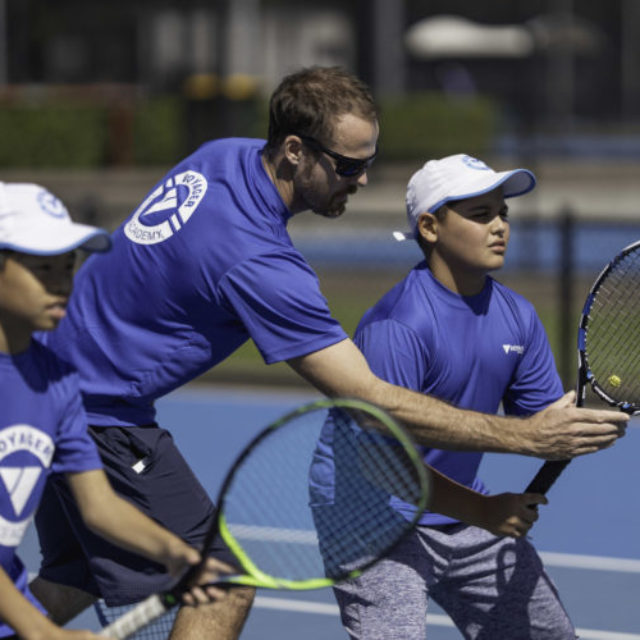A pathway to a life-changing education | Ryan Henry
Pursuing tennis at an elite level can be one of the most exciting and rewarding journeys a person can go on. The buzz of competing against the best can be hugely enjoyable but even more important are the human qualities that tennis can provide to players from their experiences both on the court and off the court.
Players who strive to reach world-class levels of the game often develop an incredibly strong work ethic and the personal characteristics needed to be successful in any area of life. Perhaps the biggest life-enhancing opportunity that elite tennis players have is the ability to gain a higher education via U.S. College Tennis scholarships, which can be worth up to $500,000 AUD at some of the best universities in the world.
Some top professional players who competed in college tennis include: John Isner, John McEnroe, Kevin Anderson, James Blake, Mike and Bob Bryan and more recently in the 2019 Australian Open Danielle Collins who made the semi finals of the women’s singles. Bob Bryan who has won 23 grand slam titles and the Davis Cup for the United States describes his time at Stanford as the best two years of his life.
A U.S. College education can either be used a launchpad for the professional circuit or to propel into a successful career in tennis or beyond. Over many years Australian juniors who have travelled to the U.S. have benefitted from scholarships and whilst enjoying a life-changing experience.
Steps to become eligible for a U.S. College
The pathway to a U.S. College education is one that is achievable for many Australian junior tennis players, however, it is necessary to be purposeful about how you pursue this goal and getting the right balance of tennis and academics is critical. There are 3 key requirements that a player needs to satisfy which are listed below.
Tennis Requirements
The first aspect College coaches assess when deciding who to recruit into their team is a players Universal Tennis Rating (UTR). The UTR is worldwide and is currently the most accurate measuring tool to assess a players ability to perform in competitive matches. As a general rule, the higher a players UTR, the more scholarship opportunities will be available.
For male players, athletic scholarships are available with a UTR range of 9.5 to 13.5+ across several divisions, and for females with a UTR range of 6.5 to 10.5+. (myutr.com)
The best way to increase a players UTR is to work hard on developing into a stronger player in tournament conditions. Players should aim to achieve their highest UTR in February/March after graduating from high school, which is around the deadline when College coaches recruit players into their teams for the upcoming season.
Academic Requirements
U.S. Colleges have 3 key academic requirements alongside tennis achievements:
- A student will need to sit an S.A.T. exam. This is a one-off exam that students will generally sit during or after year 12 and most division 1 and 2 schools are generally looking for a minimum SAT score of 1000 or higher
- A student will need to have a sufficient Grade Point Average averaging at least B’s and C’s in all of their core courses in Australia as a minimum to be eligible for most division 1 and division 2 programs. This equates to an Australian grade point average of 3.5+ (Converts to a 2.5 US GPA)
- Students will need to undertake and pass 16 core courses from year 9 onward including subjects such as English, Maths, Science, Social Science, plus 4 additional courses
Balancing getting enough hours of the tennis court and in the classroom is a key challenge juniors have. Choosing a high school that balances academics and tennis is critical as during this time (ages 12-18) is one of the most challenging periods for an elite tennis player as the training, competition and academic requirements all increase at the same time. For over six years, we have executed an academic and elite training model at The McDonald College.
Ryan Henry is a former professional tennis player and co-founder of Voyager Tennis Academy, which specialises in the development of elite junior players. He is also the co-author of the book Winning On and Off The Court, which is a newly released parents guide to creating world class players and people. For more information around the U.S. College pathway please visit Voyager Tennis Academy.
READ MORE
This content is taken from the full article A Pathway to a Life-Changing Education featured in the June/July 2019 of Australian Tennis Magazine, which can be purchased from their online store.

